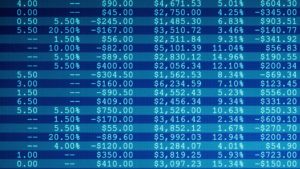How Are Drones Used in the Oil and Gas Industry?

The most up-to-date technological developments in sensing and imaging methods allow drones to be used for diverse applications in the areas of both engineering and pure science.
Specialists in many industries are exploiting the unique flexibility and observational capabilities of drones to improve and refine industrial processes and operational efficiency. In many companies, the devices perform safety assessments and prognostic upkeep of vital equipment and parts of infrastructure.
Drone Applications Specific to Oil and Gas
In the oil and gas sector, commercial drone manufacturers are working in close conjunction with companies worldwide to make customized applications available for industrial use.
This development will, in turn, allow for the creation of various types of data collection methods that can help obtain real-time insights into safety issues, weak areas of operation, potential leaks, and many other types of data.
Drones have come into use in the oil and gas industry as a precise, highly maneuverable, and cost-efficient means of carrying out transportation network and asset inspections, as well as asset management.
Through the increasing use of unmanned aerial vehicles (UAVs), oil and gas companies are enhancing the quality of their inspection procedures and findings, improving the safety and wellbeing of employees, and lowering the typically high costs related to manual inspection and analysis of oil and gas systems.
Drones are being employed for an assortment of functions, ranging from indoor and limited-space inspection procedures to more complex applications, such as conducting corporate research and examining the physical condition of pipelines.
Oil and gas companies can gain the following advantages by utilizing drones in the oil and gas industry.
Inspections Conducted by Drones
By implementing the services of drone technology, oil and gas companies are experiencing significant reductions in workplace hazards. Also, based on industry research, the use of UAVs to conduct inspections can produce increased efficiency of up to 33 percent and reduced inspection costs of up to 50 percent.
The main factor prompting oil and gas suppliers to begin using drones is the ability of UAVs to swiftly and securely carry out inspection-related activities that normally require many hours to perform and place workers at substantial personal risk.
For instance, drones can conduct inspections of essential oil refinery production equipment, chimneys, smokestacks, jetties, storage tanks, and other potentially unsafe locations without the need for human involvement.
Monitoring and Observation from a Distance
Oil and gas companies use drones to remotely check and observe equipment, infrastructure components, trucks, tankers, and other company assets in the oil and gas sector.
Drones are able to deliver 360-degree views of subjects for the monitoring of field operations, keep an eye on the development of new facilities, and detect encroachment on pipelines, railways, and other valuable company property.
Moreover, remote monitoring with drones is now making the efficient inspection of fully automated offshore oil and gas rigs a reality.
Inspection and Proactive Maintenance
Some drones feature ultrasonic sensors and high-tech visual inspection equipment, including infrared cameras and thermal imaging devices, to perform up-close and non-disruptive inspections of oil and gas assets to look for structural defects, system deficiencies, or potentially hazardous situations.
Employing this methodology has shown to be highly effective in assessing the condition of oil and gas pipelines and the outer surfaces and sub-surfaces of storage tanks and tanker ships.
In addition, by combining information gained from drones with sophisticated data analysis methods, companies can now assess the current status of these items and foresee the likelihood of breakdowns or leaks.
Control of Methane Emissions
The oil and gas industry, as a whole, is directing increased attention to reducing methane emissions to help in the worldwide fight against global warming and climate change.
To this end, companies are purchasing a wide array of high-tech sensing devices that can either be permanently mounted on equipment or installed on drones to acquire real-time data. For example, the Norwegian multinational energy firm Equinor invests in a research effort to create laser-based sensors that can identify methane leaks throughout their systems.
Emergency Response Activities
In the event of a natural disaster or an industrial accident, UAVs can afford a broad overhead perspective of developments occurring on the ground.
Real-time images and video analytics delivered by drones can also assist in plotting the progress of oil spills or fires, which can help companies better manage emergency response activities and channel resources appropriately while guaranteeing workers’ safety and wellbeing.
Expedited Material Handling and Delivery
Technology groups around the globe are currently researching the dependability of UAVs in delivering products for various consumer-oriented and health-related Industries. UAVs could also be adapted for use in the oil and gas sector to convey shipments to production platforms in the vicinity.
While limits on the size and weight of loads may affect the feasibility of using drones in such cases, the practice may offer an alternative to the current means of transporting smaller loads.
Enhancement of Workplace Safety
Safety is a significant concern in all aspects of the oil and gas sector, and UAVs enable companies to eliminate the risks related to employees going into restricted spaces or other unsafe locales.
As mentioned above, drones can eliminate traditional methods of inspecting areas like essential production components in oil refineries, chimneys, smokestacks, storage tanks, jetties, and other potentially hazardous environments.
If certain situations call for humans to be involved, they can minimize the time allotted for human participation through the effective use of drones. Often, inspections by drones can also decrease the need to obtain confined space entry permits from a company’s environment, health, and safety divisions.
Less Downtime Required for Inspections
Inspections performed by humans in the oil and gas industry generally halt production, resulting in considerable downtime and lost revenue. Exchanging human inspections for drone inspections can provide companies with comprehensive views of the damaged parts of a system without experiencing any loss of production time.
Increased Cost Savings
Inspections performed by UAVs permit oil and gas companies to better plan and allocate their human and financial resources. Besides lowering operating costs related to interruptions in production, UAV inspections shrink the number of valuable working hours required to conduct employee investigations.
Human involvement necessitates the use of multiple staff members, often together with a rescue squad. However, drone-executed inspections involve fewer employees, possibly just a single engineer and a drone pilot.
The ability to conduct inspections more quickly can save working hours usually used to perform other duties. Drones can accomplish a task that requires rappelling into a cramped area that may generally take 10-12 work hours in much less time, as they can reach areas far more quickly.
Become a member of COPAS
COPAS is the Council of Petroleum Accountants Societies. Members of COPAS are at the forefront of driving change and innovations that shape accounting in the petroleum industry.
By becoming members of COPAS, petroleum accountants societies gain leverage in the industry, increased knowledge and insight, and a platform to collaborate with like-minded professionals. By joining COPAS, you can outpace the rest and learn more about our industry’s best accounting practices, standards, and guidelines.
We established our Accredited Petroleum Accountant® (APA®) program in 1996 to certify accountants within the oil and gas industry. It ensures that petroleum accountants are proficient in the basic elements of knowledge essential to oil and gas accounting.
COPAS POLICIES: Complaints | Cancellation & Refund Policy


















